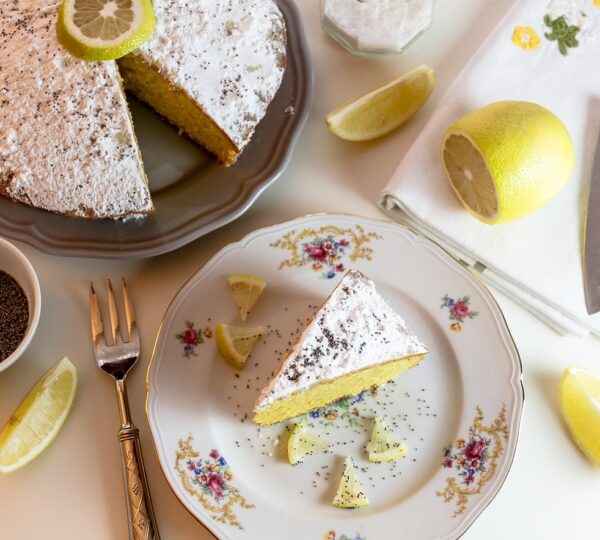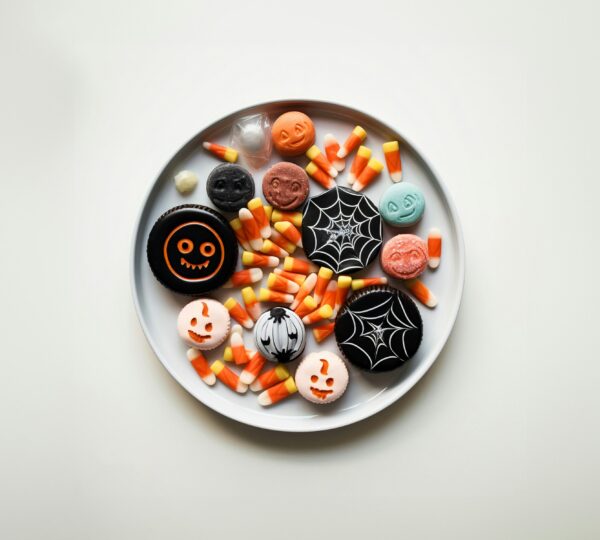
4 Halloween Foods and Their Historical Roots
As a child, Halloween was my favorite time of the year. I particularly enjoyed dressing up and collecting candies from Neighbors. I can still recall a particular Halloween night while out trick-or-treating with my friends. We rushed from house to house with our bags slowly filling with candies, but at one house we were offered caramel apples. And while my friends traded their sweets for more candies, I spent the rest of the night savoring that caramel apple.
I can remember returning home that night and wondering what it is about certain foods that make them staples of this holiday? From candy corn to pumpkin-flavored treats, Halloween foods have deep historical roots that intertwined ancient traditions with modern-day rituals. But have you also ever wondered how these beloved Halloween treats came to be associated with this festive occasion? Join me as we explore the fascinating origins of some classic Halloween foods and uncover why these traditions continue to thrive today.
The Celtic Roots of Halloween: Samhain and the Beginning of Treats
During Samhain (the ancient festival that later became Halloween, people left offerings of food—such as fruits, nuts, and breads—outside their homes to appease wandering spirits. This is one of the earliest connections between food and Halloween. The belief was that if spirits were well-fed, they wouldn’t cause harm to the household. Interested in discovering the deeper meaning behind Halloween ghosts and ghouls, check out our post on: Unlocking Halloween’s Deeper Meaning: What’s Behind the Ghosts and Ghouls?
Today, this tradition lives on in a much sweeter form: trick-or-treating, where people offer candy to kids in costumes instead of leaving out food for ghosts. Here are some classic Halloween foods, starting with the beloved caramel apple, that have become synonymous with this spooky celebration:
-
Apples: From Pagan Symbolism to Caramel Goodness
One of the most iconic Halloween treats is the caramel apple, but its history goes back to the ancient Celts. Apples were highly symbolic during Samhain, representing immortality and the afterlife. In fact, bobbing for apples—now a fun Halloween party game—has its roots in ancient Roman and Celtic traditions. It was a way for people to predict the future, particularly in matters of love and marriage. According to History.com, young unmarried people would try to bite into apples floating in water to foresee their future romantic partners.
Caramel apples, a more modern twist, came into popularity in the early 1900s as a delicious seasonal treat. It was easy to make at home and became a popular Halloween snack due to its connection to fall and harvest festivals.
- Pumpkins and Jack-O’-Lanterns: The Evolving Role of the Pumpkin
No Halloween would be complete without pumpkins, especially jack-o’-lanterns. But pumpkins weren’t always part of the Halloween tradition. Originally, in Ireland, people carved faces into turnips and other root vegetables during Samhain. This was done to ward off evil spirits, particularly “Stingy Jack,” a mischievous figure from Irish folklore who was said to wander the Earth after tricking the Devil himself.
When Irish immigrants came to America, they found that pumpkins, native to North America, were much easier to carve. Over time, pumpkins became the go-to vegetable for creating spooky lanterns. Today, jack-o’-lanterns are an iconic part of Halloween celebrations, with pumpkin carving events, contests, and even pumpkin-flavored everything—think pumpkin pie, pumpkin spice lattes, and pumpkin cookies!
- Soul Cakes: The Origins of Trick-or-Treating
The medieval tradition of “souling” is another significant part of Halloween’s food history. During All Souls’ Day, poor people would go door to door offering prayers for the deceased in exchange for soul cakes, small round cakes marked with a cross. This custom laid the groundwork for modern-day trick-or-treating, where instead of prayers for the dead, children receive candy.
Soul cakes were made with spices like nutmeg, cinnamon, and ginger, which are still associated with fall and Halloween. Though the practice of “souling” has faded, the act of going door to door for food remains a central element of Halloween festivities.
- Candy Corn: A Sweet Treat with Deep Roots
Love it or hate it, candy corn is a Halloween staple. But did you know that it was originally called “chicken feed”? Created in the 1880s by the Wunderle Candy Company, candy corn was marketed as a treat for farmers, symbolizing the harvest and the agricultural roots of fall festivals. Today, candy corn is synonymous with Halloween, with millions of pounds produced every year.
In 2023, USA Today reported that candy corn sales spiked as people embraced nostalgia during Halloween, reconnecting with traditions from childhood. While some might argue about the taste, its status as a Halloween treat is undeniable.
Modern Halloween Food Trends: Beyond Candy
In recent years, Halloween food trends have expanded beyond just candy and caramel apples. Today, themed foods dominate social media, with platforms like Instagram and TikTok showcasing elaborate Halloween-inspired dishes. Some popular trends include spooky cupcakes, witch-themed cocktails, and even vegan and gluten-free Halloween treats, reflecting a growing awareness of health-conscious and inclusive eating.
According to Delish, 2024 saw a rise in Halloween-themed charcuterie boards (sometimes called “boo-boards”), featuring a spooky spread of meats, cheeses, and seasonal fruits. Pinterest also reported that Halloween-themed baking searches skyrocketed, with people seeking out recipes for haunted house cakes and creepy cookies.
Myths and Legends Around Halloween Foods
Halloween foods have long been associated with myths and legends. For instance, there’s a popular belief that if you eat an apple on Halloween while looking in a mirror, you’ll see the reflection of your future spouse. Other Halloween foods, like candy, are often linked to urban legends about being tampered with, though these myths are largely unfounded according to Snopes, a fact-checking website.
Why We Still Love Halloween Foods
Despite the changing times and the influence of modern trends, Halloween foods remain a beloved part of the holiday. Whether it’s the historical significance of offerings during Samhain or the playful indulgence of candy corn and caramel apples, food is an essential part of what makes Halloween so special. In a world that’s constantly evolving, these treats connect us to the past while allowing us to create new traditions.
Conclusion: A Deliciously Spooky Tradition
Halloween foods, with their rich history and evolving trends, offer much more than just a sweet treat. They’re a blend of ancient traditions, folklore, and modern-day fun that continue to shape the way we celebrate this spooky holiday. As you enjoy your Halloween goodies this year, take a moment to remember the ancient roots behind your favorite treats, and embrace the spirit of the season.
So, the next time you bite into a caramel apple or carve a jack-o’-lantern, know that you’re participating in a centuries-old tradition that connects us all. Whether you’re bobbing for apples or simply indulging in your favorite candy, Halloween’s culinary delights are a delicious reminder of the holiday’s deep-rooted history.
Sources:
- History.com: Halloween: Origins, Meaning & Traditions
- Snopes.com: Halloween Candy & Tampering Rumors: A Poisoned Mix?
- Delish: Top Halloween Food Trends in 2022













